Investigating Iron Alloy Phase Changes Using High Temperature In Situ SEM Techniques
Abstract
:1. Introduction
2. Materials and Methods
2.1. Materials
2.2. In Situ SEM Heat Treatment
2.3. Ex Situ Characterisation
2.4. Data Analysis of Phase Change Kinetics
3. Results
3.1. Ex Situ Microstructures
3.2. In Situ Phase Change: SE
3.3. In Situ Phase Change: EBSD
3.4. Tracking Phase Changes In Situ
4. Discussion
5. Conclusions
Author Contributions
Funding
Institutional Review Board Statement
Informed Consent Statement
Data Availability Statement
Acknowledgments
Conflicts of Interest
References
- Heard, R.; Huber, J.E.; Siviour, C.R.; Edwards, G.; Williamson-Brown, E.; Dragnevski, K. An investigation into experimental in-situ SEM imaging at high temperature. Rev. Sci. Instrum. 2020, 91, 063702. [Google Scholar] [CrossRef] [PubMed]
- Oliveira, F.L.G.G.; Andrade, M.S.; Cota, A.B. Kinetics of austenite formation during continuous heating in a low carbon steel. Mater. Charact. 2007, 58, 256–261. [Google Scholar] [CrossRef] [Green Version]
- Zhang, C.; Zhou, L.; Liu, X.; Wu, X.; Liu, Y. Reverse Transformation from Ferrite/Pearlite to Austenite and Its Influence on Structure Inheritance in Spring Steel 60Si2MnA Chaolei. Steel Res. Int. 2014, 85, 1453–1458. [Google Scholar] [CrossRef]
- Farahani, H.; Zijlstra, G.; Mecozzi, M.G.; Ocelík, V.; De Hosson, J.T.M.; Van Der Zwaag, S. In Situ High-Temperature EBSD and 3D Phase Field Studies of the Austenite-Ferrite Transformation in a Medium Mn Steel. Microsc. Microanal. 2019, 25, 639–655. [Google Scholar] [CrossRef] [PubMed]
- Heard, R.; Dragnevski, K.I.; Siviour, C.R. In-situ SEM observation of grain growth in the austenitic region of carbon steel using thermal etching. J. Microsc. 2020, 279, 249–255. [Google Scholar] [CrossRef] [PubMed] [Green Version]
- Smallman, R.E. AHWN. In Modern Physical Metallurgy; Elsevier: Amsterdam, The Netherlands, 2019; pp. 473–498. [Google Scholar]
- Iron-Carbon Phase Diagram. Available online: https://www.substech.com/dokuwiki/doku.php?id=iron-carbon_phase_diagram (accessed on 4 June 2020).
- Goldstein, J.I.; Newbury, D.E.; Micahel, J.R.; Ritchie, N.W.W.; Scott, J.H.J.; Joy, D.C. Scanning Electron Microscopy and X-ray Microanalysis, 4th ed.; Springer: Berlin/Heidelberg, Germany, 2018. [Google Scholar]
- Heard, R.; Siviour, C.R.; Dragnevski, K.I. In situ SEM analysis of surface oxidation mechanisms in carbon steel during vacuum heat treatment. Mater. Today Proc. 2020, 33, 1898–1903. [Google Scholar] [CrossRef]
- Fanfoni, M.; Tomellini, M. The Johnson-Mehl-Avrami-Kolmogorov model: A brief review. Il Nuovo Cim. D 1998, 20, 1171–1182. [Google Scholar] [CrossRef]
- Starink, M.J. Kinetic equations for diffusion-controlled precipitation reactions. J. Mater. Sci. 1997, 32, 4061–4070. [Google Scholar] [CrossRef]
- Avrami, M. Kinetics of phase change. II Transformation-time relations for random distribution of nuclei. J. Chem. Phys. 1940, 8, 212–224. [Google Scholar] [CrossRef]
- Walentek, A.; Seefeldt, M.; Verlinden, B.; Aernoudt, E.; Van Houtte, P. Electron backscatter diffraction on pearlite structures in steel. J. Microsc. 2006, 224, 256–263. [Google Scholar] [CrossRef] [PubMed]
- Avrami, M. Granulation, phase change, and microstructure kinetics of phase change. III. J. Chem. Phys. 1941, 9, 177–184. [Google Scholar] [CrossRef]
- Saito, R.; Nakada, N.; Yabu, S.; Hayashi, K. Effects of Initial Structure and Reversion Temperature on Austenite Nucleation Site in Pearlite and Ferrite–Pearlite. Metall. Mater. Trans. A Phys. Metall. Mater. Sci. 2018, 49, 6001–6009. [Google Scholar] [CrossRef]
- Hömberg, D.; Patacchini, F.S.; Sakamoto, K.; Zimmer, J. Revisited Johnson-Mehl-Avrami-Kolmogorov model and the evolution of grain-size distributions in steel. IMA J. Appl. Math. 2017, 82, 763–780. [Google Scholar] [CrossRef]
- Pereloman, E.; Edmonds, D.V. Phase Transformations in Steels. Volume 1: Fundamentals and Diffusion-Controlled Transformations; Woodhead Publishing: Cambridge, UK, 2012. [Google Scholar]
- Hou, J.; He, B. Effect of starting microstructures on the reverse transformation kinetics in low-carbon steel. Metals 2020, 10, 1601. [Google Scholar] [CrossRef]
- Meiser, J.; Urbassek, H.M. Ferrite-to-austenite and austenite-to-martensite phase transformations in the vicinity of a cementite particle: A molecular dynamics approach. Metals 2018, 8, 837. [Google Scholar] [CrossRef] [Green Version]
- Chen, H.; van der Zwaag, S. An Overview of the Cyclic Partial Austenite-Ferrite Transformation Concept and Its Potential. Metall. Mater. Trans. A Phys. Metall. Mater. Sci. 2017, 48, 2720–2729. [Google Scholar] [CrossRef]
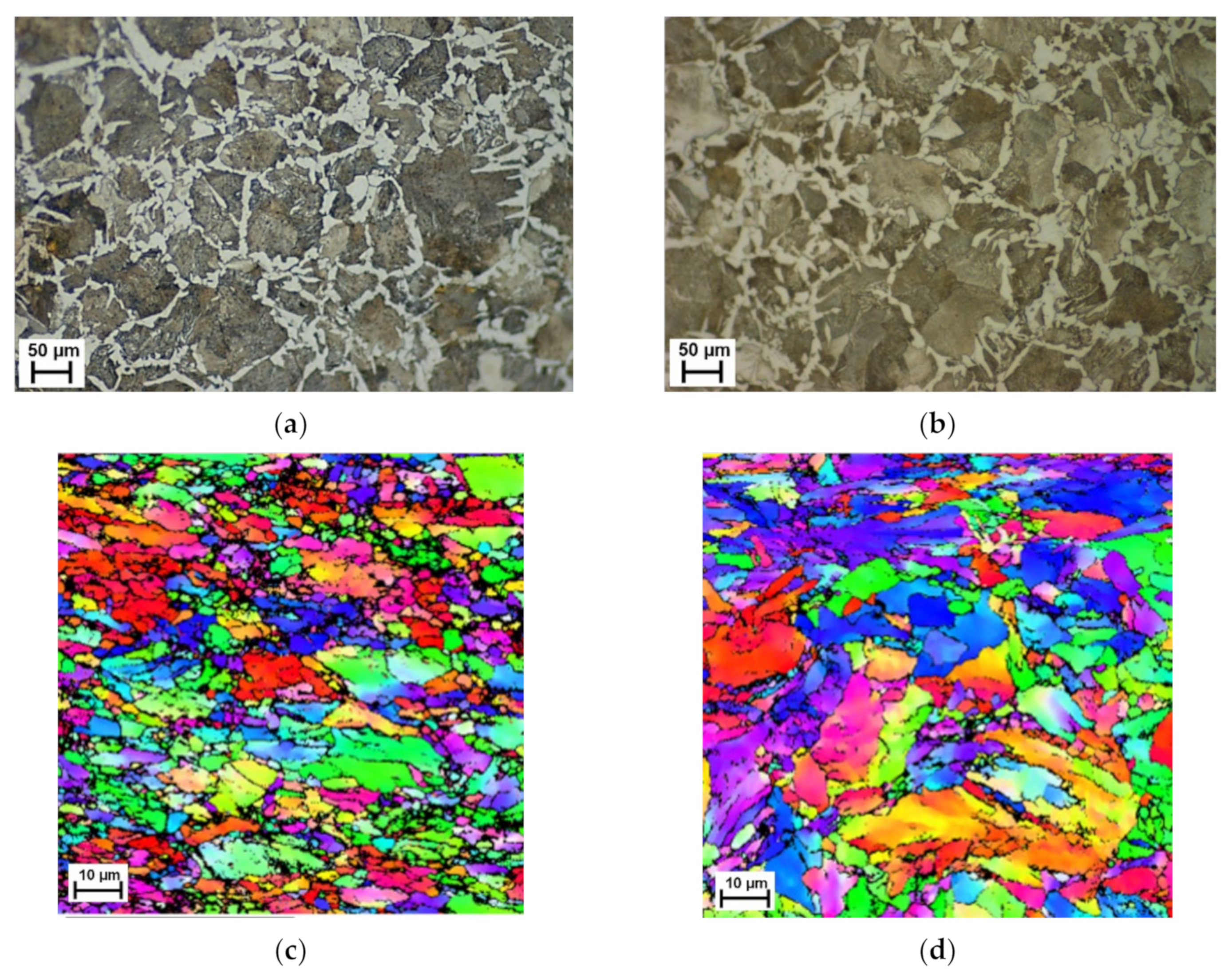
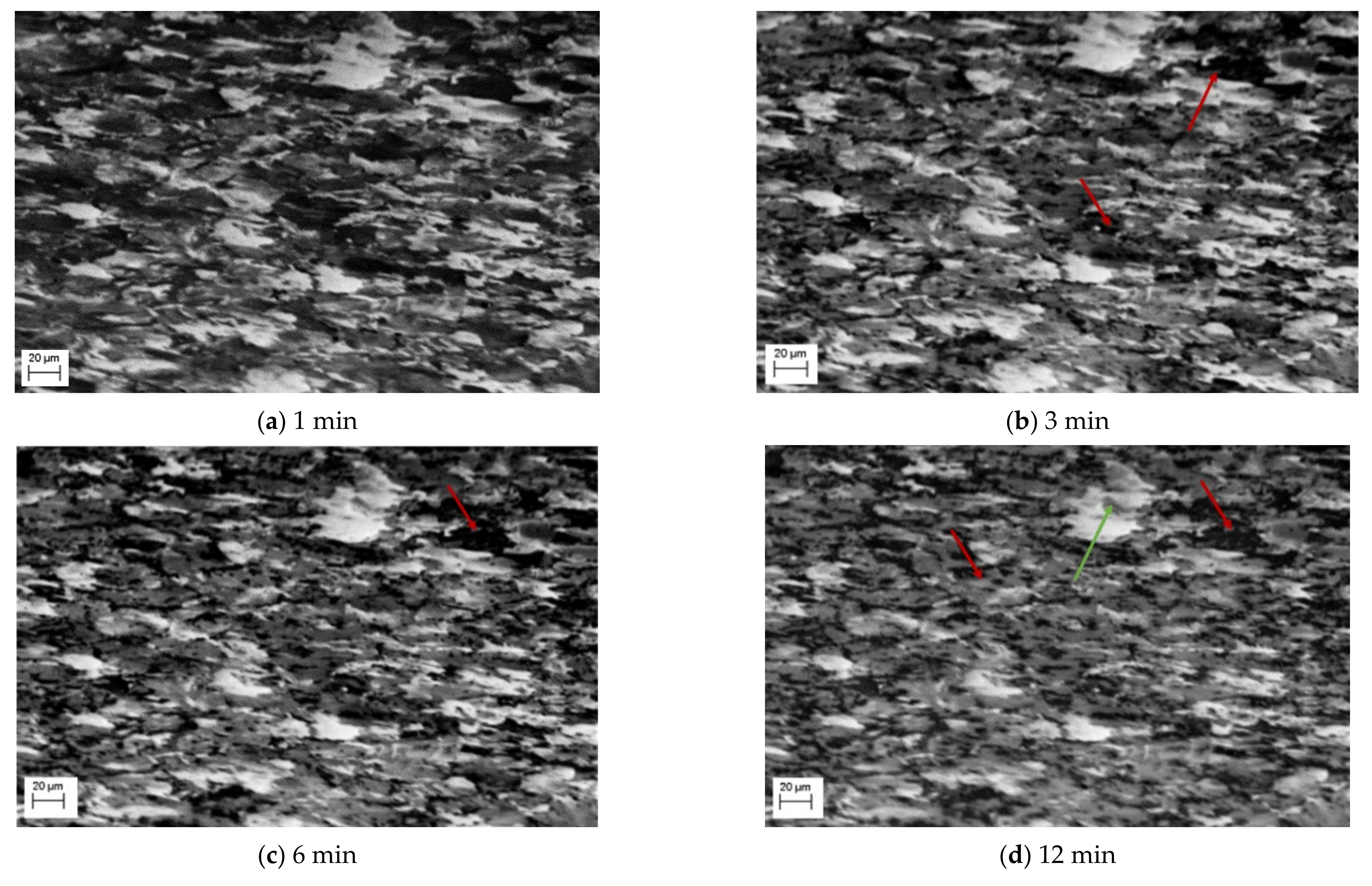
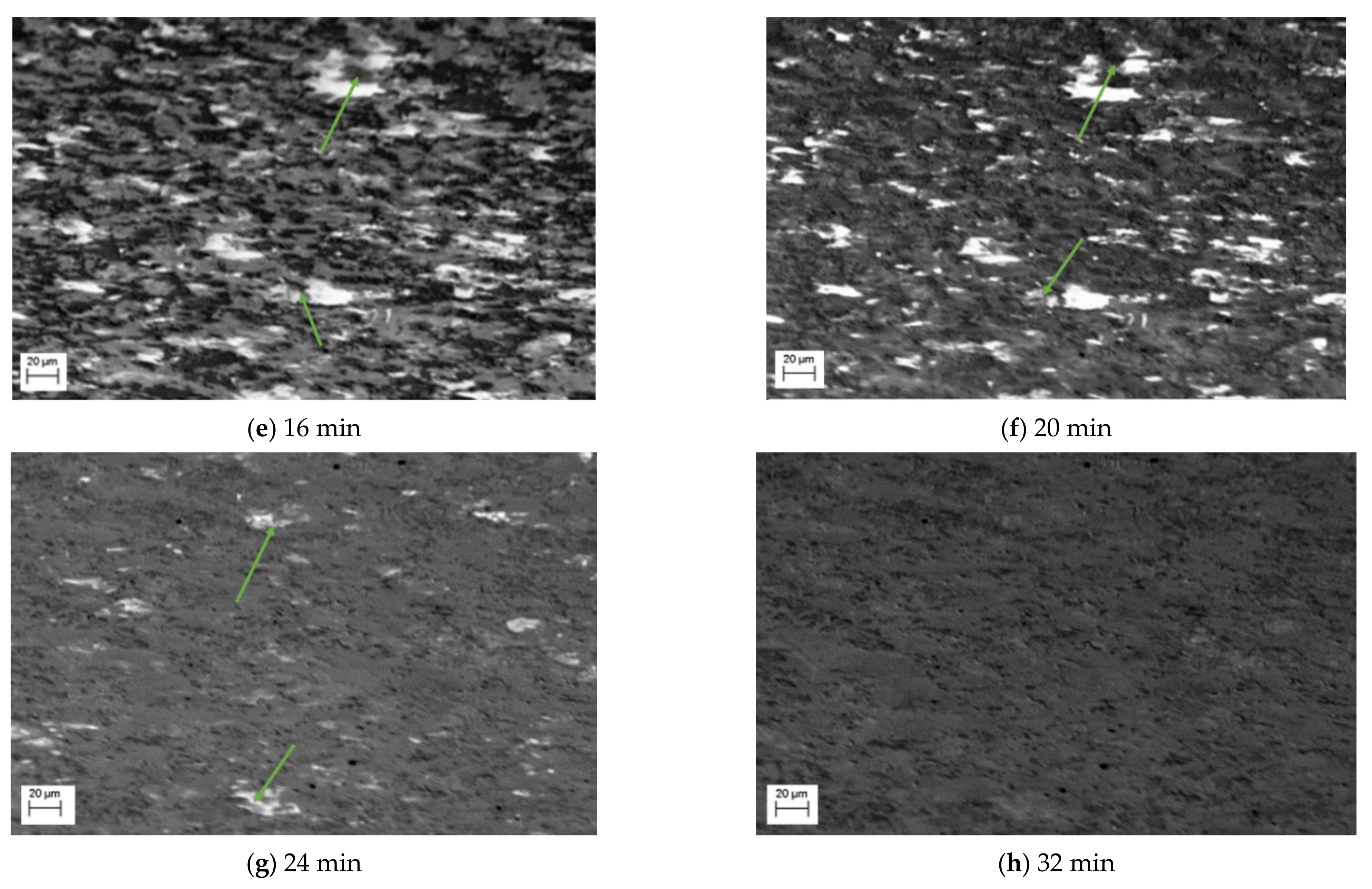
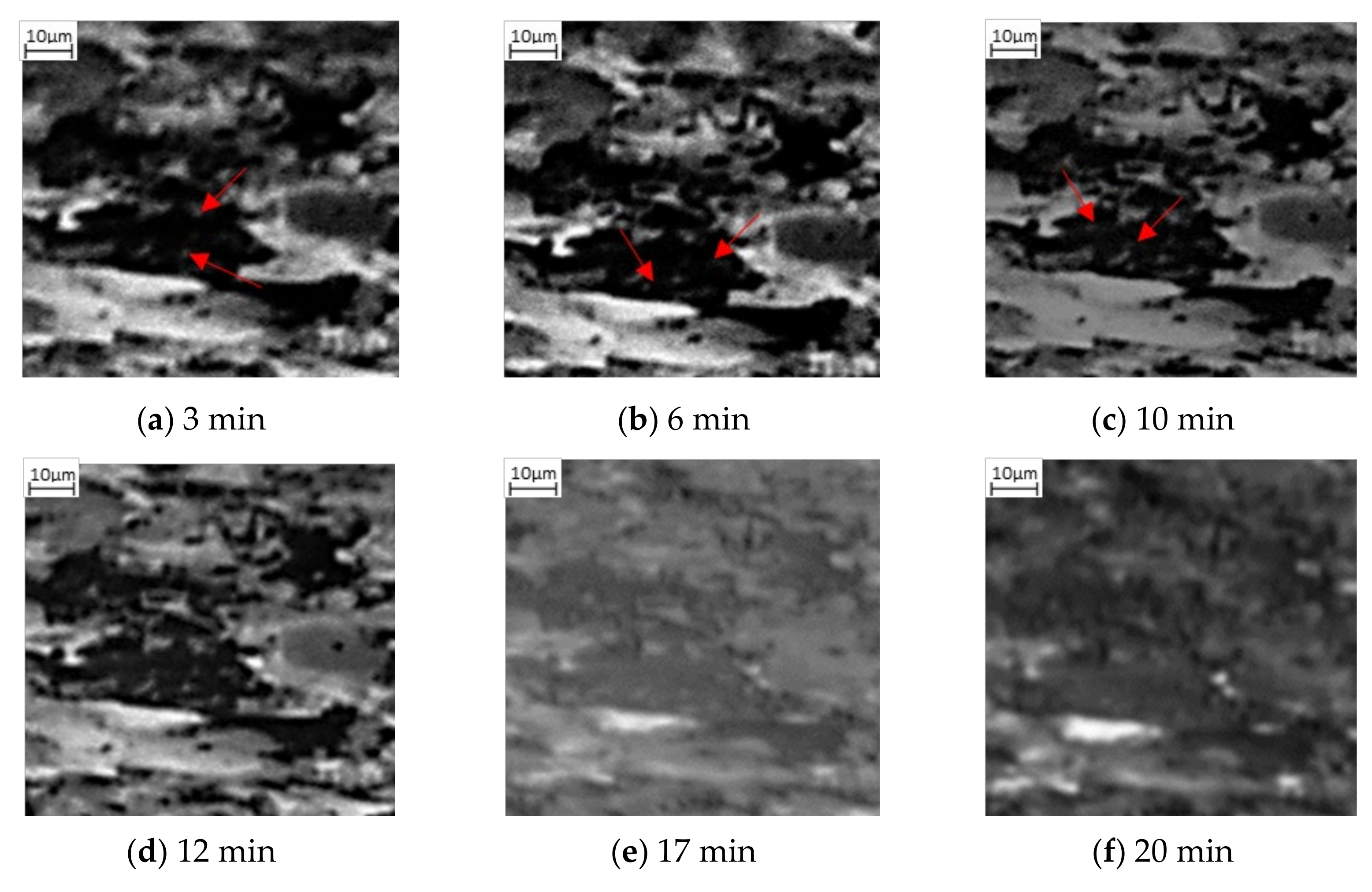
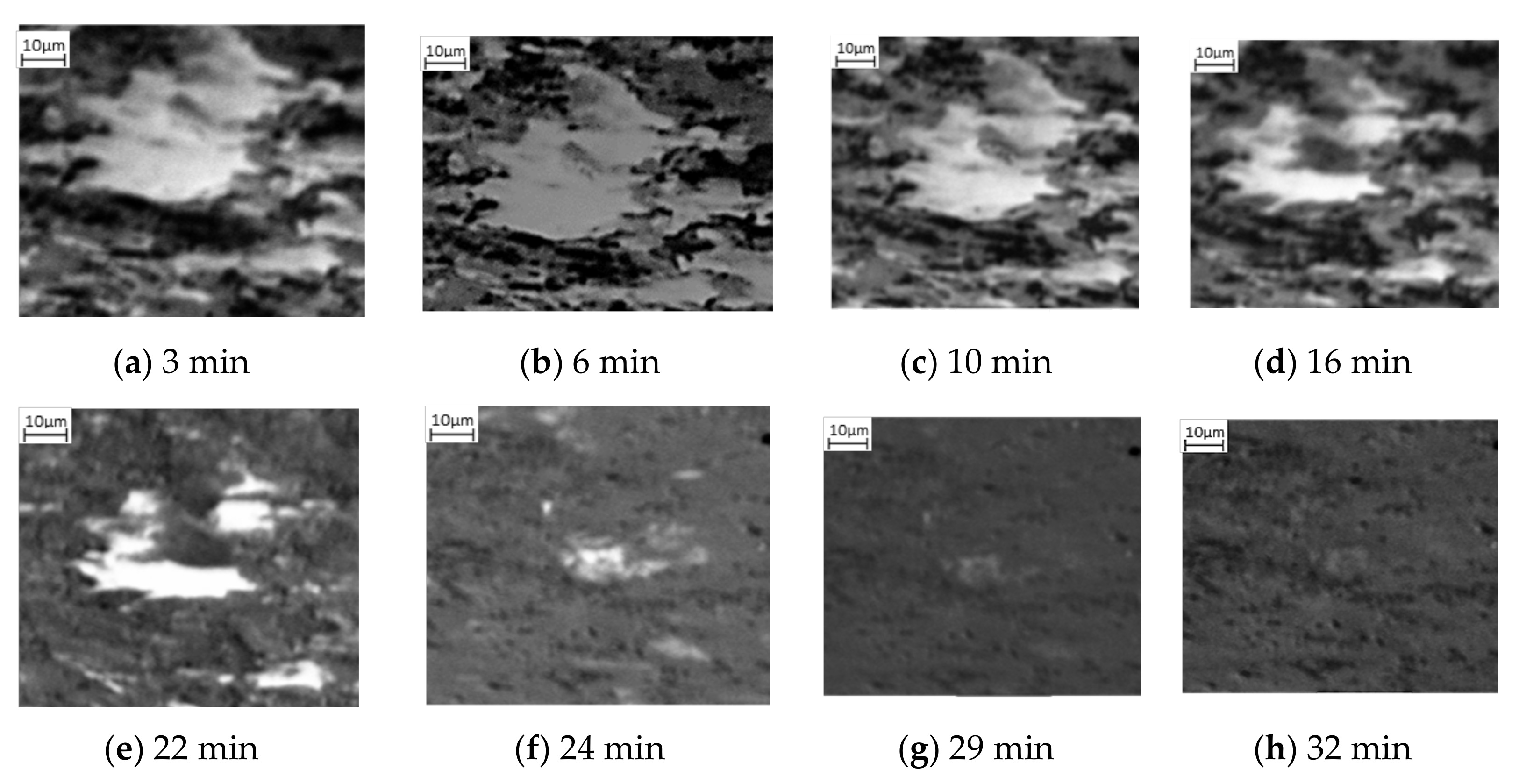

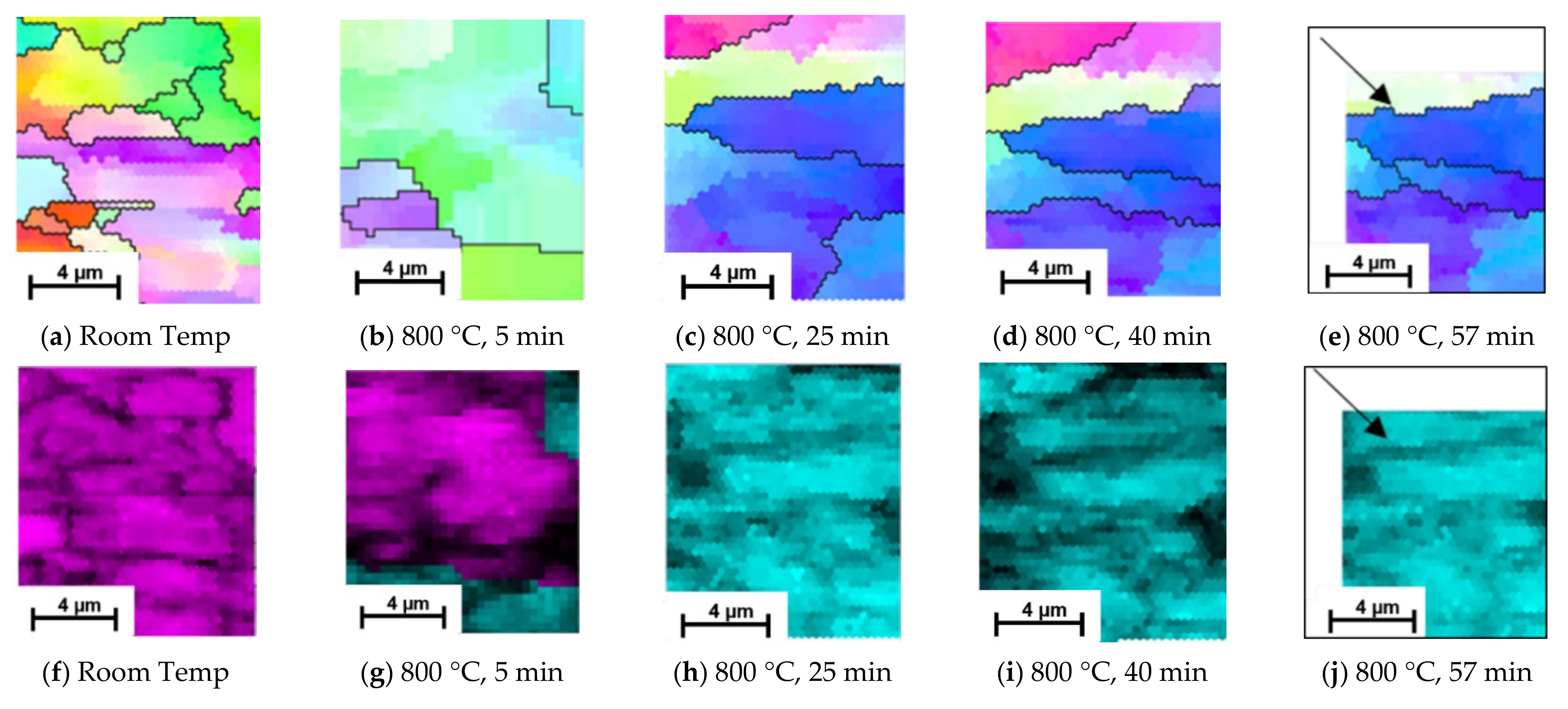

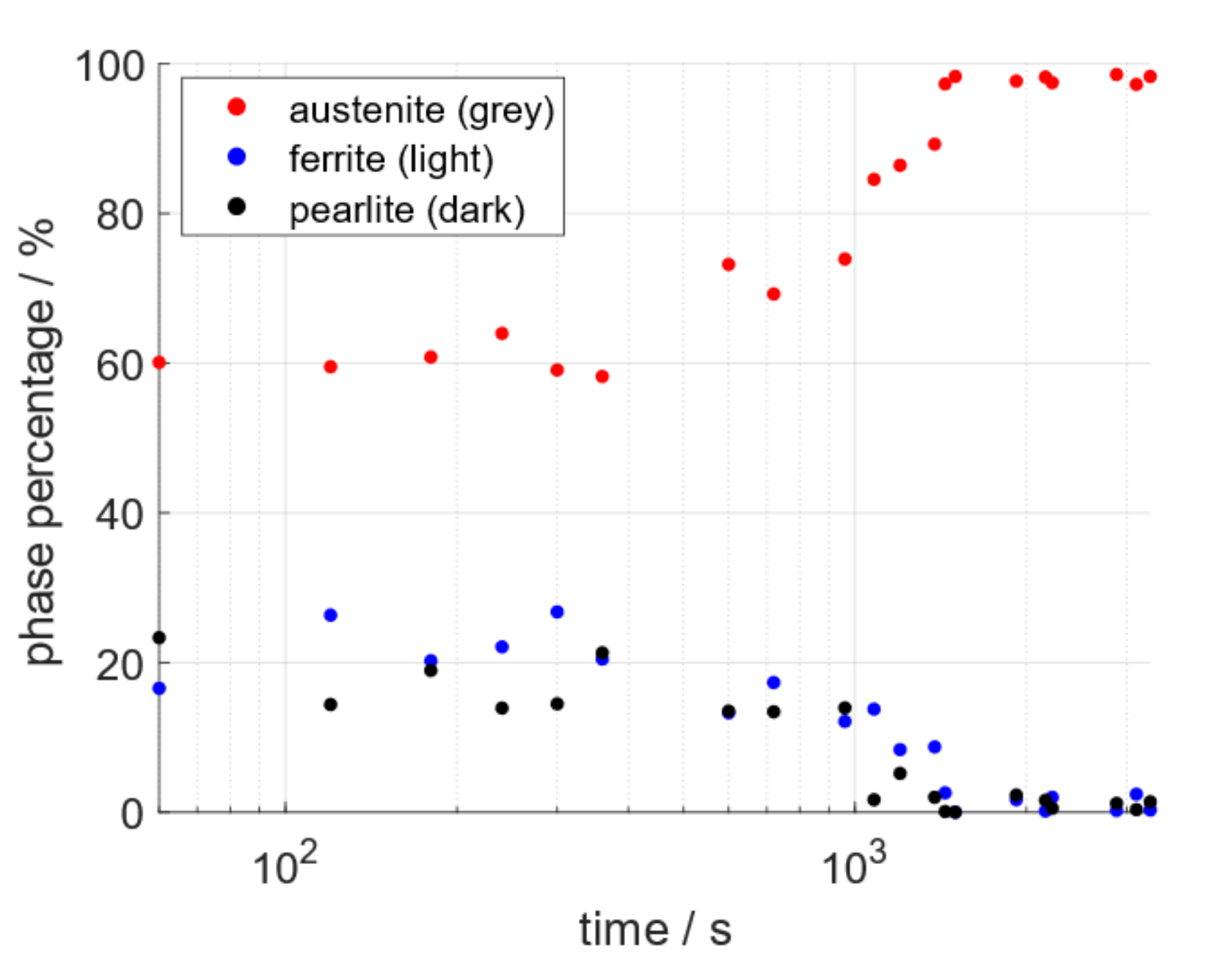
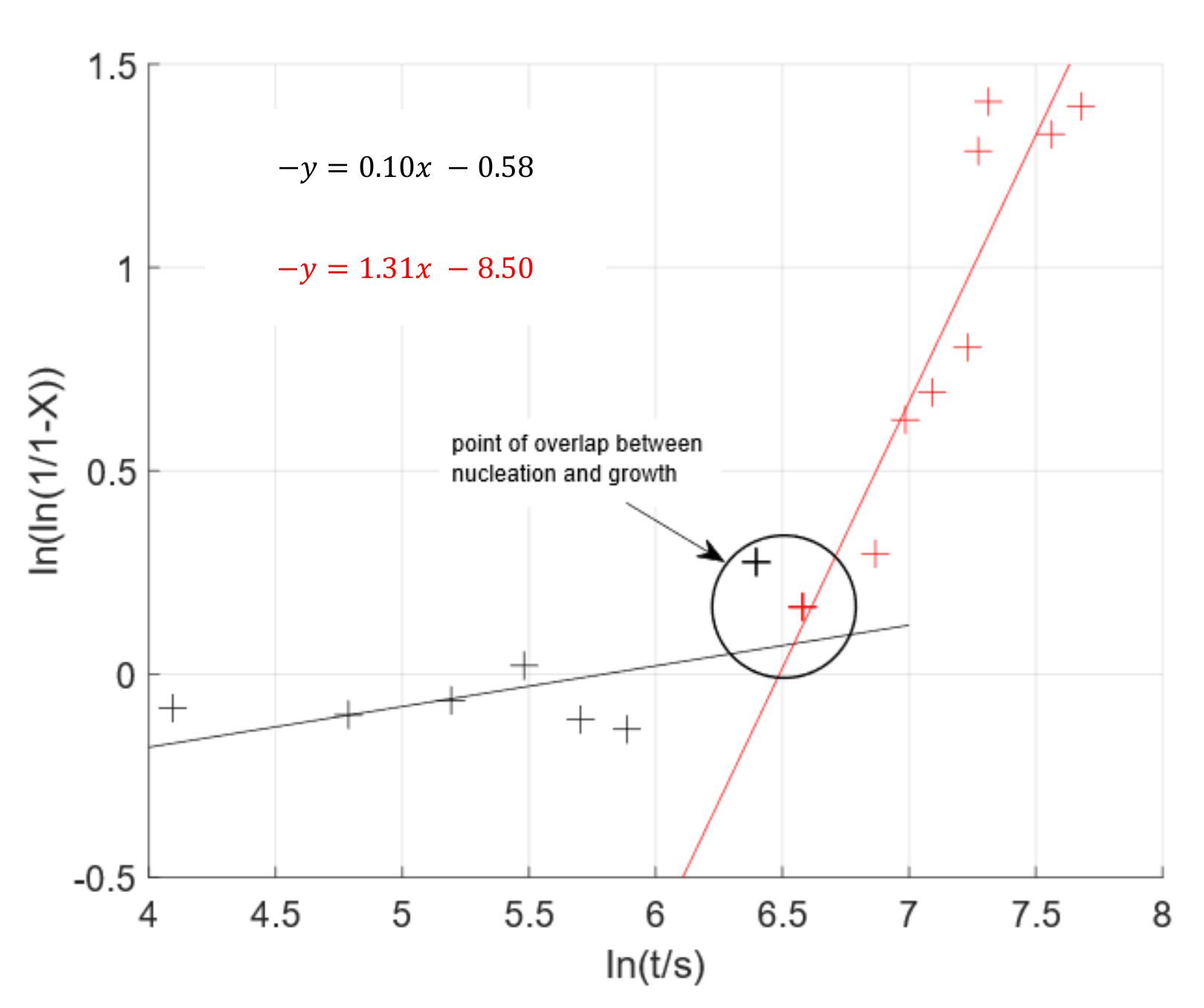
Publisher’s Note: MDPI stays neutral with regard to jurisdictional claims in published maps and institutional affiliations. |
© 2022 by the authors. Licensee MDPI, Basel, Switzerland. This article is an open access article distributed under the terms and conditions of the Creative Commons Attribution (CC BY) license (https://creativecommons.org/licenses/by/4.0/).
Share and Cite
Heard, R.; Siviour, C.R.; Dragnevski, K. Investigating Iron Alloy Phase Changes Using High Temperature In Situ SEM Techniques. Materials 2022, 15, 3921. https://doi.org/10.3390/ma15113921
Heard R, Siviour CR, Dragnevski K. Investigating Iron Alloy Phase Changes Using High Temperature In Situ SEM Techniques. Materials. 2022; 15(11):3921. https://doi.org/10.3390/ma15113921
Chicago/Turabian StyleHeard, Rhiannon, Clive R. Siviour, and Kalin Dragnevski. 2022. "Investigating Iron Alloy Phase Changes Using High Temperature In Situ SEM Techniques" Materials 15, no. 11: 3921. https://doi.org/10.3390/ma15113921
APA StyleHeard, R., Siviour, C. R., & Dragnevski, K. (2022). Investigating Iron Alloy Phase Changes Using High Temperature In Situ SEM Techniques. Materials, 15(11), 3921. https://doi.org/10.3390/ma15113921





